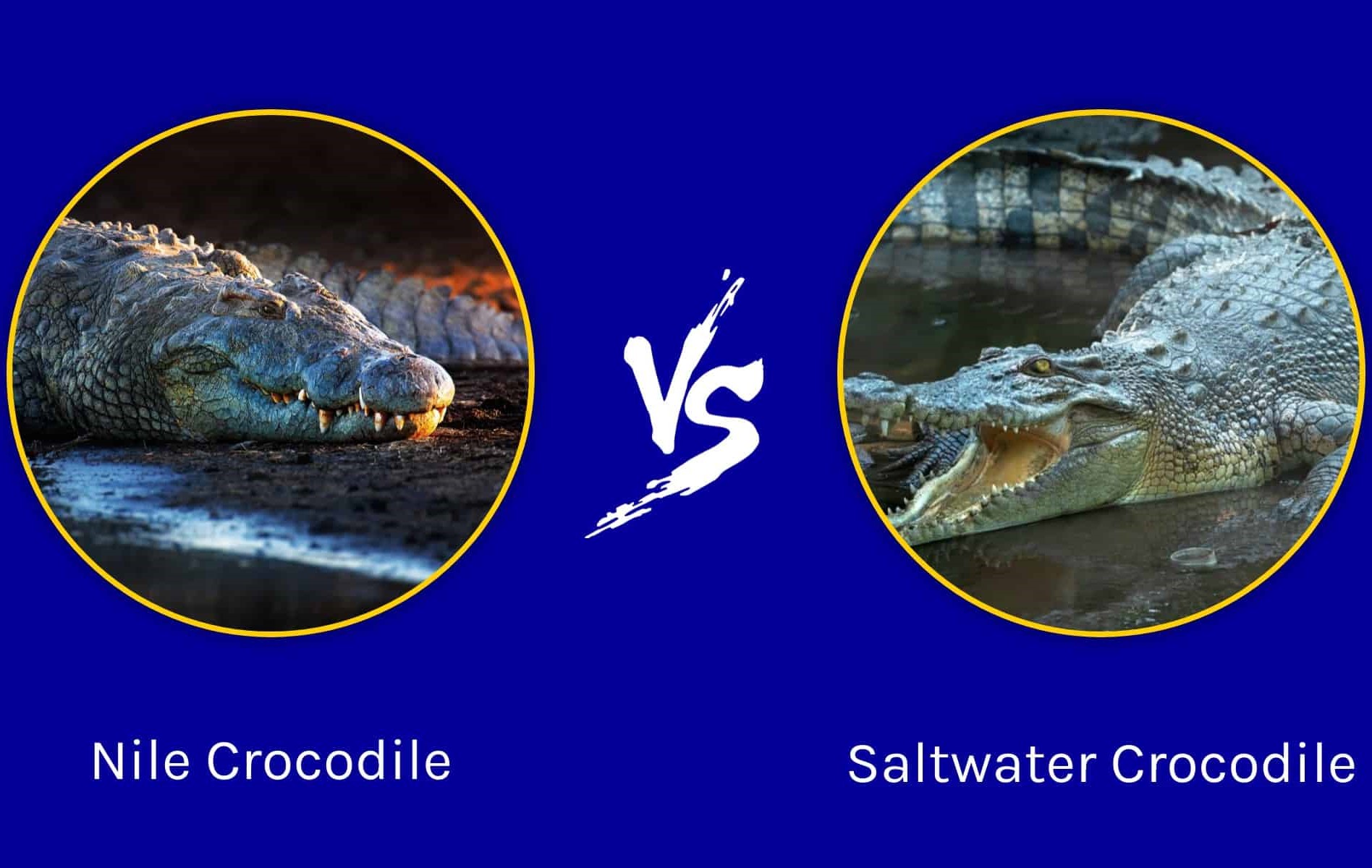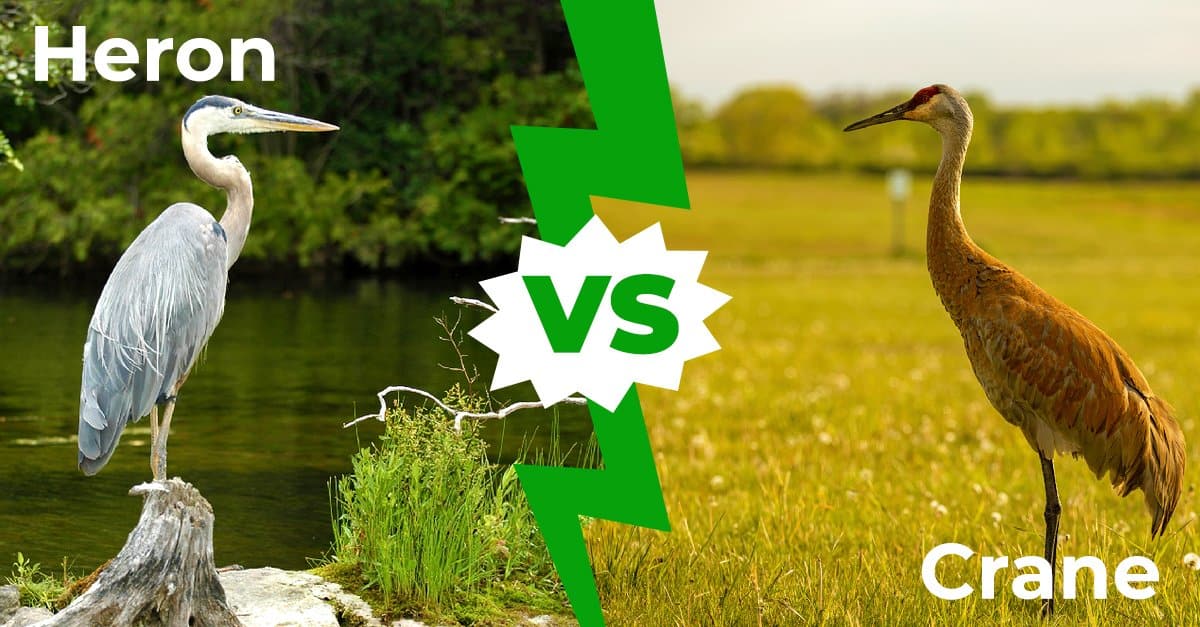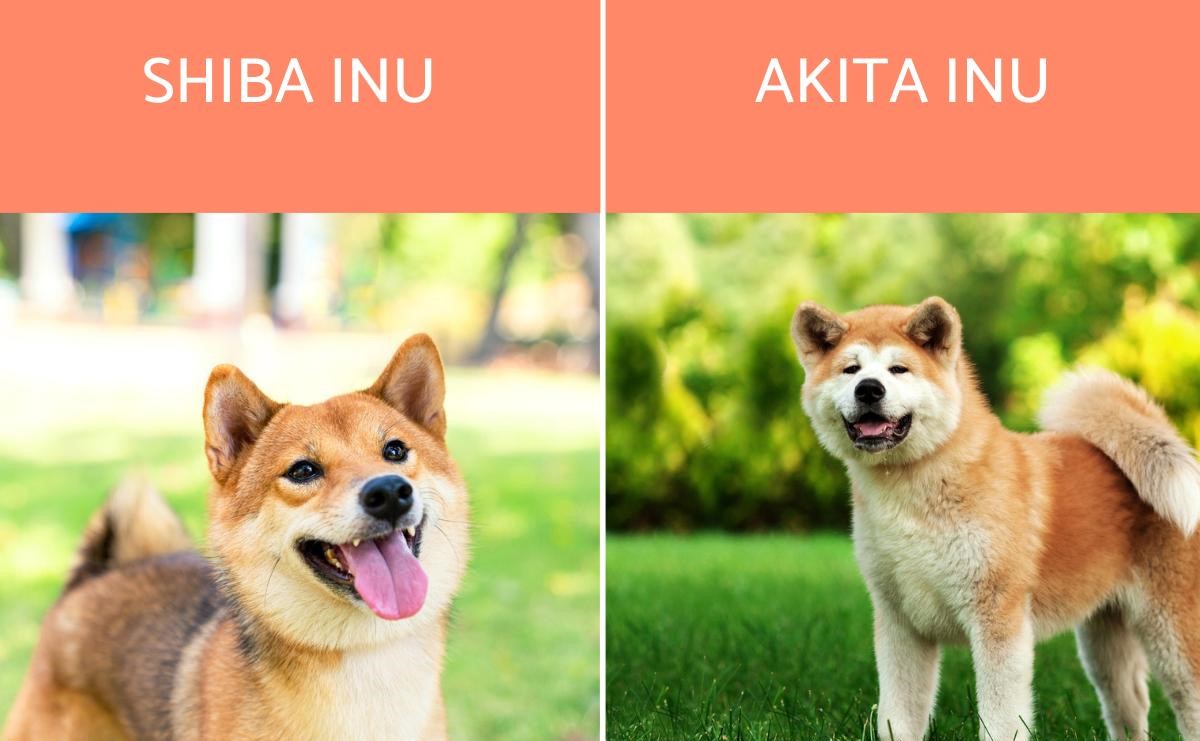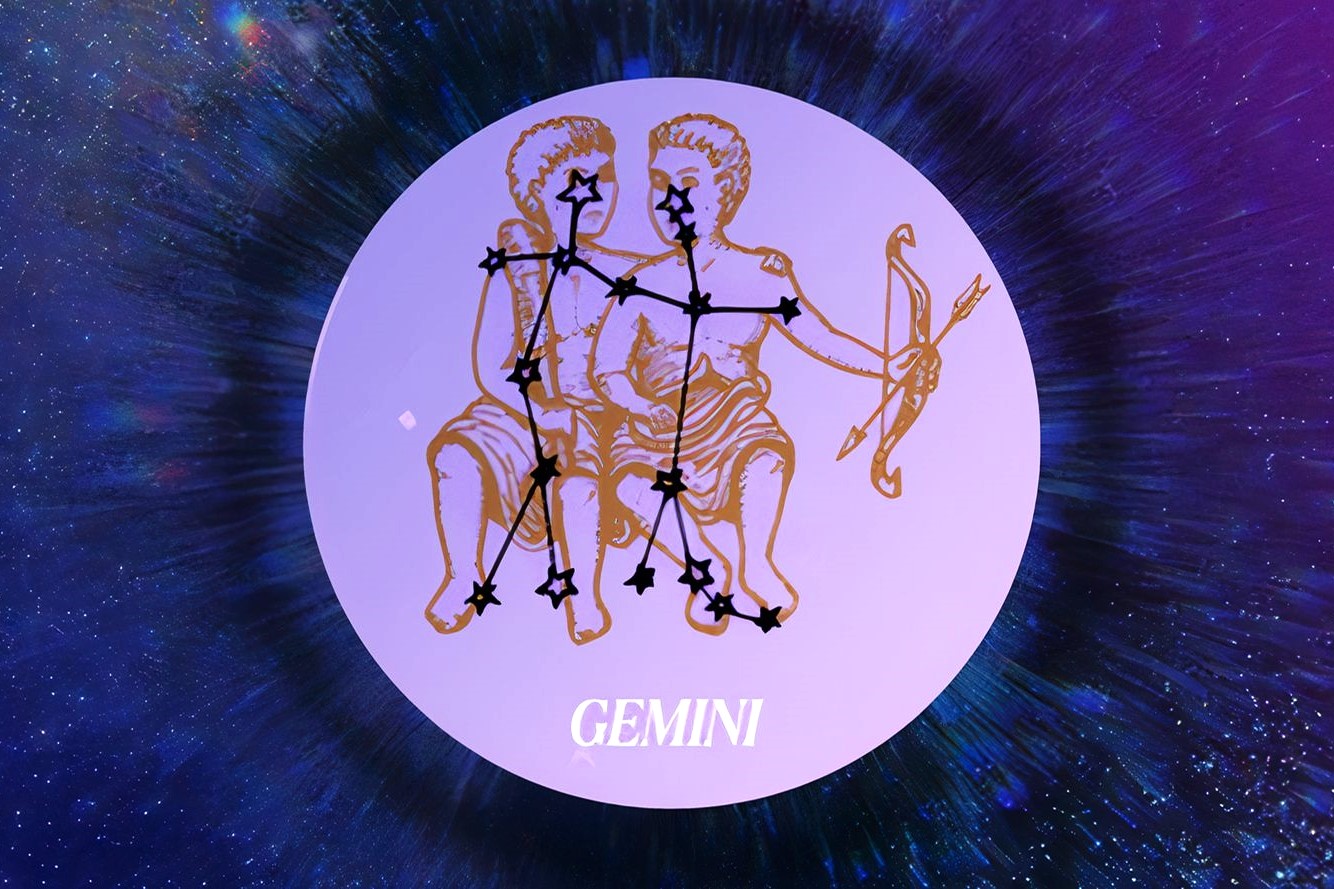Home>Science>Unveiling The Astonishing Contrasts Between Saltwater And Nile Crocodiles!


Science
Unveiling The Astonishing Contrasts Between Saltwater And Nile Crocodiles!
Published: January 16, 2024
Discover the intriguing differences between saltwater and Nile crocodiles in this fascinating exploration of the science behind these incredible creatures. Gain a deeper understanding of their unique characteristics and behaviors.
(Many of the links in this article redirect to a specific reviewed product. Your purchase of these products through affiliate links helps to generate commission for Noodls.com, at no extra cost. Learn more)
Table of Contents
Introduction
Crocodiles are among the most formidable and captivating creatures on our planet. Their ancient lineage, formidable appearance, and remarkable behaviors have long captured the imagination of humans. In this article, we will delve into the intriguing world of crocodiles, focusing on the astonishing contrasts between two prominent species: the saltwater crocodile and the Nile crocodile. By exploring their physical characteristics, habitats, feeding behavior, reproduction, and conservation status, we aim to shed light on the unique traits and ecological significance of these remarkable reptiles.
The saltwater crocodile, scientifically known as Crocodylus porosus, holds the title of being the largest living reptile. Its sheer size and reputation as a fearsome predator have earned it the moniker "salty." On the other hand, the Nile crocodile, scientifically referred to as Crocodylus niloticus, is renowned for its adaptability and widespread presence across various African regions. Despite their shared ancestry and predatory prowess, these two species exhibit striking differences in their physical attributes, behaviors, and ecological roles.
As we embark on this exploration, we will unravel the distinctive features that set these crocodiles apart, providing a deeper understanding of their evolutionary adaptations and ecological significance. Join us as we embark on a riveting journey through the captivating realms of saltwater and Nile crocodiles, where ancient instincts and modern conservation efforts intersect to shape the future of these extraordinary reptiles.
Physical Characteristics
The physical attributes of saltwater and Nile crocodiles offer a fascinating glimpse into the evolutionary adaptations that have shaped these formidable reptiles. Let's delve into the contrasting features that distinguish these two species:
Saltwater Crocodile
- Size and Weight: The saltwater crocodile reigns as the largest living reptile, with adult males reaching lengths of up to 6 meters (20 feet) or more. These colossal creatures can weigh over 1000 kilograms (2200 pounds), showcasing their remarkable physical dominance in their aquatic habitats.
- Head Shape: One of the defining characteristics of the saltwater crocodile is its broad and elongated snout, which sets it apart from other crocodilian species. This distinctive feature contributes to its formidable appearance and aids in capturing prey with swift precision.
- Coloration: Juvenile saltwater crocodiles boast vibrant and contrasting banding on their bodies, providing effective camouflage in their estuarine environments. As they mature, their coloration tends to darken, blending seamlessly with the murky waters they inhabit.
Nile Crocodile
- Size and Weight: While not as massive as their saltwater counterparts, Nile crocodiles still command impressive dimensions, with adult males averaging 5 meters (16 feet) in length. Their robust build and formidable jaws make them formidable predators in their African habitats.
- Head Shape: The Nile crocodile is characterized by a broader and more robust head compared to the saltwater crocodile. This feature aligns with their ambush hunting strategy, allowing them to deliver powerful bites to secure their prey.
- Coloration: Juvenile Nile crocodiles display a lighter coloration, adorned with distinct dark spots and bands that gradually fade as they mature. The adult's dark olive-brown hue provides effective camouflage in the muddy waters and lush vegetation of their habitats.
These remarkable physical characteristics not only exemplify the unique adaptations of saltwater and Nile crocodiles but also underscore their pivotal roles as apex predators in their respective ecosystems. From their colossal size to their intricate color patterns, these traits showcase the awe-inspiring diversity and evolutionary mastery of these ancient reptilian giants.
Habitat and Distribution
Saltwater Crocodile:
- The saltwater crocodile, also known as the "salty", is renowned for its remarkable adaptability to diverse aquatic environments. It inhabits a wide range of habitats, including brackish water estuaries, mangrove swamps, and freshwater rivers across Southeast Asia, Northern Australia, and the eastern coast of India. These expansive territories provide the saltwater crocodile with ample opportunities to thrive in both saltwater and freshwater ecosystems, showcasing its versatility as a formidable apex predator.
Nile Crocodile:
-
In contrast, the Nile crocodile maintains a strong presence across various African regions, including the Nile Basin, sub-Saharan Africa, and Madagascar. These crocodiles favor freshwater habitats such as rivers, lakes, and marshlands, where they can bask in the sun and stealthily patrol the waters in search of prey. The Nile crocodile's widespread distribution underscores its adaptability to diverse environments, reflecting its historical significance in African folklore and ecological dynamics.
-
Despite their distinct geographic ranges, both the saltwater and Nile crocodiles play integral roles in shaping the ecological balance of their respective habitats. Their ability to thrive in varied aquatic settings highlights their resilience and evolutionary prowess, positioning them as keystone species that exert profound influences on the intricate web of life within their ecosystems.
Feeding Behavior
The feeding behavior of saltwater and Nile crocodiles offers a captivating insight into their predatory strategies and ecological impact. These apex predators play a crucial role in regulating the populations of prey species, thereby influencing the overall balance of their respective ecosystems.
Saltwater Crocodile:
The saltwater crocodile, renowned for its formidable hunting prowess, employs a diverse array of feeding techniques to secure its meals. With its immense size and powerful jaws, this apex predator targets a wide range of prey, including fish, crustaceans, birds, and mammals. One of the most striking displays of the saltwater crocodile's feeding behavior is its remarkable ability to launch ambush attacks on unsuspecting prey. Concealed within the murky waters or camouflaged amidst the mangrove foliage, these stealthy predators lie in wait, poised to strike with astonishing speed and precision. When the opportune moment arises, the saltwater crocodile lunges forward with explosive force, seizing its prey in a vice-like grip before dragging it beneath the surface to consume its meal. This ambush hunting strategy, coupled with the saltwater crocodile's immense strength, exemplifies its role as a top-tier predator in its aquatic domain.
Nile Crocodile:
Similarly, the Nile crocodile is a masterful hunter, employing an array of tactics to secure its sustenance in the diverse habitats it inhabits. From patiently stalking its prey along the banks of rivers to stealthily submerging beneath the water's surface, the Nile crocodile demonstrates remarkable adaptability in its feeding behavior. With a diet encompassing fish, amphibians, reptiles, and even larger mammals such as zebras and wildebeests, these formidable predators play a pivotal role in regulating the populations of their prey species. The Nile crocodile's ability to swiftly capture and subdue its quarry underscores its status as a top predator in the African aquatic ecosystems, exerting a profound influence on the intricate dynamics of its environment.
In essence, the feeding behavior of saltwater and Nile crocodiles epitomizes the evolutionary mastery and ecological significance of these ancient reptilian giants. As apex predators, they wield considerable influence in shaping the delicate balance of their respective ecosystems, underscoring the vital role they play in maintaining the intricate web of life within their habitats.
Reproduction
Reproduction is a pivotal aspect of the life cycle for saltwater and Nile crocodiles, encompassing a series of intricate behaviors and adaptations that ensure the perpetuation of their species across generations. The reproductive processes of these ancient reptiles offer a compelling glimpse into their evolutionary strategies for survival and the preservation of their genetic legacy.
Saltwater Crocodile:
The reproductive behavior of saltwater crocodiles is characterized by a remarkable fusion of instinctual rituals and maternal care. During the breeding season, which typically occurs from September to October, male saltwater crocodiles engage in fierce territorial displays to assert dominance and secure mating rights. These displays often involve vocalizations, posturing, and aggressive behaviors, reflecting the intense competition for access to potential mates. Once a male successfully establishes his dominance, he courts a female through a series of elaborate displays and vocalizations, culminating in the formation of a mating pair.
Following successful copulation, female saltwater crocodiles meticulously prepare nesting sites in sandy riverbanks or elevated areas to protect their eggs from flooding. The intricate process of nest construction involves the female using her powerful hind limbs to excavate a shallow depression, where she deposits a clutch of eggs, often numbering between 40 to 60. The female then covers the eggs with sand, effectively concealing them from potential predators and regulating their incubation temperature through her attentive nesting behaviors.
The maternal care exhibited by female saltwater crocodiles extends beyond nest construction, encompassing the vigilant protection of their eggs during the incubation period, which spans approximately 80 to 90 days. This period is marked by the female's unwavering dedication to safeguarding her nest, warding off potential threats, and regulating the temperature by adjusting the depth of the eggs in response to environmental conditions. Upon hatching, the female assists her hatchlings by gently excavating the nest and guiding them to the water, where they begin their perilous journey of survival in the aquatic realm.
Nile Crocodile:
Similarly, the reproductive behavior of Nile crocodiles is steeped in a rich tapestry of instinctual rituals and maternal care. The breeding season, which typically occurs during the dry season, prompts male Nile crocodiles to engage in fierce territorial displays and vocalizations to attract potential mates. Once a mating pair is established, the female meticulously prepares a nesting site in sandy or vegetated areas near water bodies, where she deposits a clutch of eggs, often numbering between 25 to 80. The female then covers the eggs with additional vegetation, effectively concealing them from predators and regulating their incubation temperature through her attentive nesting behaviors.
Throughout the incubation period, which lasts approximately 80 to 90 days, the female Nile crocodile demonstrates unwavering dedication to safeguarding her nest, warding off potential threats, and regulating the temperature to optimize the hatching success of her offspring. Upon hatching, the female assists her hatchlings by gently excavating the nest and guiding them to the water, where they embark on their journey of survival under the watchful guidance of their mother.
In essence, the reproductive behaviors of saltwater and Nile crocodiles exemplify the intricate balance of instinctual rituals and maternal care, underscoring the profound significance of reproductive strategies in ensuring the survival and perpetuation of these ancient reptilian species. From fierce territorial displays to meticulous nest construction and vigilant maternal guidance, these behaviors illuminate the evolutionary mastery and ecological resilience of saltwater and Nile crocodiles in perpetuating their genetic legacy across the dynamic landscapes they call home.
Conservation Status
The conservation status of saltwater and Nile crocodiles is a critical concern, given the myriad threats they face in the modern era. Both species have been subjected to extensive hunting, habitat loss, and human-wildlife conflict, leading to significant population declines and ecological imbalances in their respective habitats. As apex predators, these ancient reptiles play integral roles in regulating the populations of prey species and shaping the intricate dynamics of their ecosystems. Therefore, understanding and addressing the conservation status of saltwater and Nile crocodiles is paramount to preserving the ecological balance and biodiversity of their habitats.
Saltwater Crocodile:
The saltwater crocodile, despite its formidable reputation, has faced substantial pressures from human activities, particularly in the form of habitat destruction and overexploitation. The conversion of mangrove swamps and estuarine habitats for agricultural and industrial purposes has significantly diminished the available territories for saltwater crocodiles, leading to fragmented populations and heightened vulnerability to environmental changes. Additionally, historical hunting for their valuable skins and conflicts with human communities have further exacerbated the conservation challenges faced by saltwater crocodiles. These cumulative threats have resulted in the classification of the saltwater crocodile as "Vulnerable" on the IUCN Red List, highlighting the urgent need for concerted conservation efforts to safeguard their populations and habitats.
Nile Crocodile:
Similarly, the Nile crocodile has confronted a myriad of conservation challenges, stemming from habitat degradation, human encroachment, and illegal hunting. The conversion of wetland habitats and the construction of dams and irrigation projects have significantly impacted the availability of suitable nesting sites and prey resources for Nile crocodiles, leading to population declines and localized extirpations. Furthermore, the illegal trade in crocodile skins and conflicts with human communities have further imperiled the survival of Nile crocodile populations across their African range. As a result, the Nile crocodile is listed as "Least Concern" on the IUCN Red List, signifying the need for continued monitoring and conservation interventions to mitigate the threats faced by this iconic species.
In response to these conservation challenges, concerted efforts have been undertaken to protect and conserve saltwater and Nile crocodiles. These initiatives encompass habitat restoration, community-based conservation programs, and sustainable management of crocodile populations to mitigate human-wildlife conflicts. Additionally, public awareness campaigns and legislative measures have been instrumental in fostering coexistence between human communities and crocodile populations, thereby reducing retaliatory killings and promoting harmonious interactions.
The conservation status of saltwater and Nile crocodiles underscores the intricate interplay between human activities and the ecological resilience of these ancient reptiles. By prioritizing their conservation, we can not only safeguard the survival of these iconic species but also uphold the delicate balance of their ecosystems, fostering a harmonious coexistence between humans and crocodiles for generations to come.
Conclusion
In conclusion, the captivating juxtaposition of saltwater and Nile crocodiles unveils a tapestry of contrasts and parallels, showcasing the awe-inspiring diversity and ecological significance of these ancient reptilian giants. From their physical characteristics and feeding behavior to their reproductive strategies and conservation status, these apex predators exemplify the intricate interplay between instinctual adaptations and human-induced pressures in shaping their survival and ecological impact.
The physical attributes of saltwater and Nile crocodiles offer a compelling testament to the evolutionary mastery and ecological resilience of these formidable reptiles. From the colossal size and powerful jaws of the saltwater crocodile to the robust build and stealthy prowess of the Nile crocodile, these physical traits underscore the diverse strategies employed by these apex predators to thrive in their respective habitats. Additionally, their distinct coloration and head shapes further accentuate the unique adaptations that have propelled them to the apex of their ecosystems.
Furthermore, the feeding behavior of saltwater and Nile crocodiles illuminates their pivotal roles as top-tier predators, regulating the populations of prey species and shaping the delicate balance of their ecosystems. Their remarkable hunting strategies, from ambush attacks to stealthy submergence, underscore the evolutionary adaptations that have endowed them with unparalleled predatory prowess, underscoring their significance as keystone species in their habitats.
The reproductive behaviors of saltwater and Nile crocodiles exemplify the delicate balance of instinctual rituals and maternal care, ensuring the perpetuation of their genetic legacy across generations. From fierce territorial displays to meticulous nest construction and vigilant maternal guidance, these behaviors underscore the profound significance of reproductive strategies in ensuring the survival and perpetuation of these ancient reptilian species.
The conservation status of saltwater and Nile crocodiles underscores the critical need for concerted efforts to safeguard their populations and habitats. Human-induced pressures, including habitat loss, overexploitation, and conflicts, have significantly impacted the survival of these iconic species, necessitating proactive conservation interventions to mitigate these threats and foster harmonious coexistence between humans and crocodiles.
In essence, the astonishing contrasts between saltwater and Nile crocodiles offer a poignant reflection of the intricate dynamics that shape the survival and ecological resilience of these ancient reptiles. By unraveling the captivating realms of these apex predators, we gain a deeper appreciation for the profound significance of their existence and the urgent imperative to champion their conservation for the benefit of our planet's biodiversity and ecological harmony.














